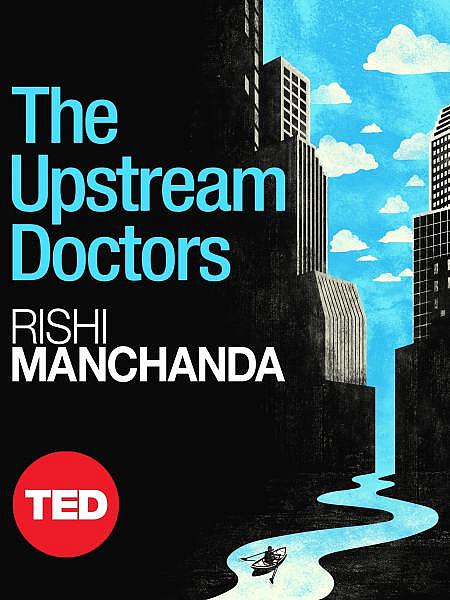New Book Says Tracking Sickness to Its Source Can Transform Health Care

The U.S. health care system has failed to address the "upstream" sources of problems.
There’s a story widely known in public health circles about three friends and a river. I retell it this way:
Three friends approach a wide, beautiful river leading to a waterfall. The idyllic scene is shattered by the cries of a small child in the water, flailing his arms while struggling to stay afloat. He’s fast approaching the waterfall. To their horror, the friends see other children in the water. They jump in to rescue the children. One by one, they try to bring them to safety. They’re successful, but not always. Soon, the rescuers realize that the number of children in need isn’t going down. They look upstream, and all they can see are more children. They get back to work, heroically redoubling their efforts. After a while, two of the rescuers look up, exhausted. The third friend is swimming away from them, upstream. One of the rescuers shouts out, “Hey! Come back! Where are you going? There are more children to save!” The other rescuer shouts back to her friends, “I know. I’m going to stop whoever or whatever is throwing these children in the water!”
I argue that the future of health care depends on growing and supporting more “upstreamists.” These are the rare innovators on the front lines of health care who see that health (like sickness) is more than a chemical equation that can be balanced with pills and procedures administered within clinic walls. They see, rather, that health begins in our everyday lives, in the places where we live, work, eat, and play.
Upstreamist practitioners — who may be doctors, nurses, or other clinicians — know that asthma can start in the air around us. They 
Except for these innovators, however, the U.S. health care system as a whole fails to seek or address upstream causes.
One warm spring day in 2011, when I was a physician in a South Central Los Angeles community clinic, a 33-year-old woman named Veronica sat in my exam room in pain, her head in her hands. For more than a year, headaches had disrupted her life and her work as an office manager at an auto parts dealer. She missed work days. Her relationships at the office became strained. She often had to call on her aging mother to care for her two sons. The headaches had repeatedly landed Veronica in clinics and emergency rooms. All told, she underwent at least a dozen blood tests, two CT scans, and a spinal tap. Each time, clinicians said her results were normal, prescribed her pain medications, and sent her home. Her latest hospital bill, for $1,200, was more than her monthly rent.
At our clinic, we did things slightly differently. While taking Veronica’s vital signs, the medical assistant who did her intake also asked questions about her housing. Veronica indicated that her apartment had some problems with mold, leaks, and roaches. These answers went into her chart, which I reviewed before I opened the door to greet her.
Armed with this information, I asked more questions about her apartment as I conducted a physical exam. Within 15 minutes, I felt pretty confident in my diagnosis: Veronica had migraines related to chronic nasal allergies and sinus congestion, conditions that are often caused or made worse by dampness, mold, and roaches. I referred her to two local organizations that could help her press her landlord for improvements. When Veronica came in for a check-up a few months later, she hadn’t been back to the emergency room. Her headaches were gone.
Veronica’s previous doctors weren’t negligent. Each clinician’s approach was probably well within the bounds of what we consider the current standard of care. The problem is that the current standard of care isn’t working. Instead of addressing the cause of disease, health care in the U.S. has long focused on just treating its symptoms. We fixate on the headache and ignore the home. Often, that means sending patients right back to the conditions that made them sick in the first place.
The U.S. spends about $8,000 per person every year on health care, more than any other nation has ever spent. But among all nations, the U.S. ranks 37thin health status. The Institute of Medicine, the health arm of the National Academy of Sciences, recently compared the U.S. with 16 other wealthy nations and put it plainly: “We uncovered a strikingly consistent and pervasive pattern of higher mortality and inferior health in the United States, beginning at birth.”
If our high-cost sick-care system is to transform into a high-value health care system, we must cultivate more upstreamists. Everyone, from patients to doctors to legislators to educators, can play a role. The few upstreamists who are already practicing in health care today — in small practices and community health centers, in hospitals and large health care systems — struggle daily against a system that wants to push them downstream. Yet together, they demonstrate that medicine can do better when it works to improve health where it begins.
Dr. Manchada's book is available at TED Books.
Photo by Julien Harneis via Flickr.

